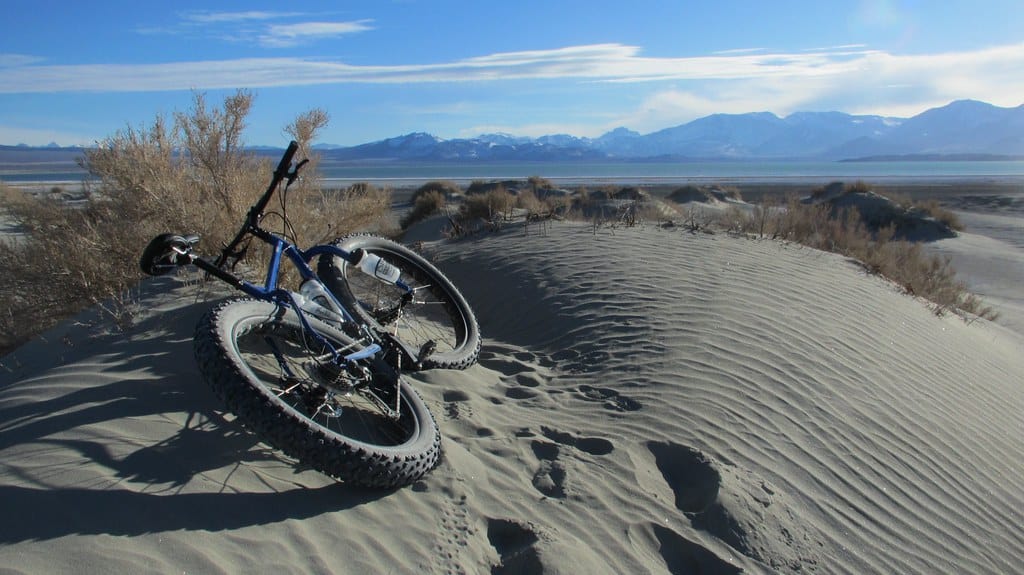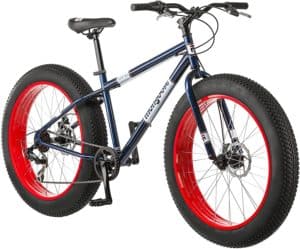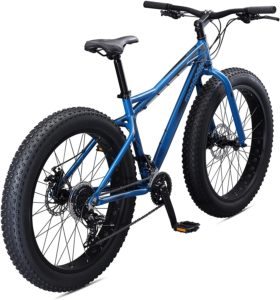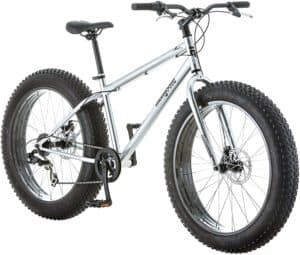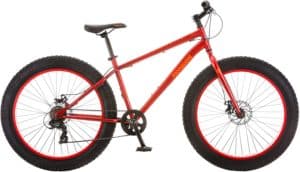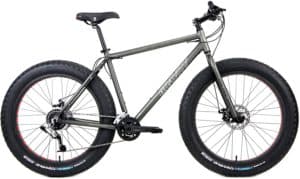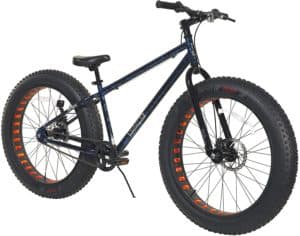Are you looking for a new bike that can ride on the sand? Outdoor cycling is a fantastic form of dynamic and fun exercise. However, many people have questions about whether there are bikes specially designed to cycle on the sand. Most people will avoid riding on the sand since little traction causes a high risk of crashing.
When using a regular mountain bike on the sand, you may not get the traction needed to ride comfortably and find great difficulties passing through the terrace.
The good news is that you can ride on desert sands or beach sand with a bike designed for such environments. Here we discuss the pros and cons of bikes for sand and why they are different from the rest.
Table of Contents
What kinds of bikes allow you to ride on sand?
Fat bikes are models designed to ride on sand, snow, or trail. They are head-turning bikes with more than 3.8-inch wide tires for flotation and traction when riding on the sand. Anyone thinking of crossing dunes in the desert on a bike would wish for a fat bike as it allows riding at a low tire pressure.
At the end of this article, I listed the best fat bikes under $500. And you can find the detailed reviews here .
.
The tires are the critical factor in purchasing a bike for sand. The large fat bike tires provide excellent traction and open riding on difficult terrains. They also make it possible to move on the sand in a manner that other mountain bikes cannot move.
They are known as fat bikes because the tires are fat, often featuring ultra-wide tires. These bikes are originally designed for cyclists to ride in all weather and terrains. The tires can be deflated to handle obstacles and keep cyclists on the sand better than the usual bikes.
Due to the broader surfaces, you can ride on the beach or snow with a fat bike. The wide tires allow riding on the sand without sinking while getting out on the loose soils or sand. As a result, the bikes offer confidence and control when riding on the sand to get over obstacles without losing traction.
Pros and cons of riding on the sand
Pros
The extra fat tires on these bikes have some advantages for cycling off-road or inclement weather. Firstly, they allow cyclists to transit through different types of terrain more than any other bike. They also handle sand better with better traction, taking the lead from car tires.
Fat bikes may be designed for sand but can also be used on typical terrain. This is because they are easy to ride for anyone interested in outdoor cycling adventure. You can transit from sand to the natural terrain on the road without much struggle.
They are made with big, low-pressure wheels that provide the suspension needed for a comfortable ride. The better suspension means you can traverse from snow-covered coastal beaches to deserts or natural terrains with much comfort and a low risk of crashing. The tires can be deflated to provide even more support over the rocks and rough terrains without wrecking the rims.
The versatile nature of fat bikes renders them the ideal choice for all-around specialty bikes. It means you can purchase them for any off-road adventure due to their versatility. They can also be ridden in all weather and, therefore, all seasons all year round.
They are heavier, which can be an advantage to anyone seeking a better workout. When riding on typical terrain such as pavements, you will need more energy to pedal, which is suitable for workouts.
Cons
Fat bikes tend to be expensive when compared to standard road bikes. The relatively more cost is primarily due to its various unique components, such as the large tires, rims, and tubes. This high cost can limit many adventurous individuals who only want to try a new biking style.
The fat bikes are also relatively heavy compared to the typical road bikes due to the components such as large tires. The weight makes them cumbersome to use and store, less portable when loading on a truck and challenging to use.
These fat bikes are also notably slow to ride compared to standard mountain bikes. The relatively heavier frames and reduced tire pressure makes the bikes slower to ride with little precision. This means they are not the best option for anyone looking to ride around the neighborhoods.
They are harder to pedal than the standard mountain bikes due to their weight, oversized tires, and relatively fewer gears. In most cases, you will find it challenging to pedal on pavements and asphalt at a similar speed as lighter bikes. This means you will be working a little bit harder while pedaling.
The replacements can also be challenging to find since the bikes are assembled using unique and expensive components. Only a few select outlets have the parts to replace fat bikes once they break down. In most cases, the rear hubs, tires, and cranks may be rare to locate.
Will the bike be damaged when riding on sand?
Riding a bike on sand can damage the fat bike on some parts requiring maintenance. Since you will be riding in all weather conditions and terrains, it becomes more necessary to perform regular maintenance. However, the fat bikes require less maintenance, with attention only placed on the frames and tires. This means they do not need high maintenance costs.
Maintenance should entail replacing the shifter cables whenever worn. Also, use silicon-based wet lubes during maintenance as it is thicker and water-resistant. The saltwater along the beach mixed with the sand can cause damage to the bike. Therefore, always ensure you dry it before storing the bike away.
However, riding on dry sand will not damage the fat bike, as you only need to brush it off. Since the big rigs will be picking more debris and moisture, you will need to wipe it off. Maintenance entails dusting the bike off with a brush after riding on the sand instead of washing it. You might also consider changing the bottom bracket bearing after some time.
Continue reading
[7 Picks] Best Fat Bikes Under 2000 | [TOP 7 ] Best Budget Fat Bikes Under 500 |
[TOP 9 ] Comparison Of The Best Fat Bikes Under $1000 | Review of The Best Kid’s Fat Tire Bike + 9 Other Picks |
Best Fat Bike Under $500
My recommendation goes to Mongoose Dolomite Fat Tire Bike
Conclusion
Fat biking is gaining popularity in the mainstream cycling industry despite being around for quite some time. It is concerned with cycling on snow and sand. This riding style is a versatile discipline that involves using bikes with oversized tires of up to five inches. The size of these tires is crucial in ensuring your ride is comfortable when moving on sand and mud surfaces. Therefore, fat bikes are an option for off-road expedition tours due to their versatility.
